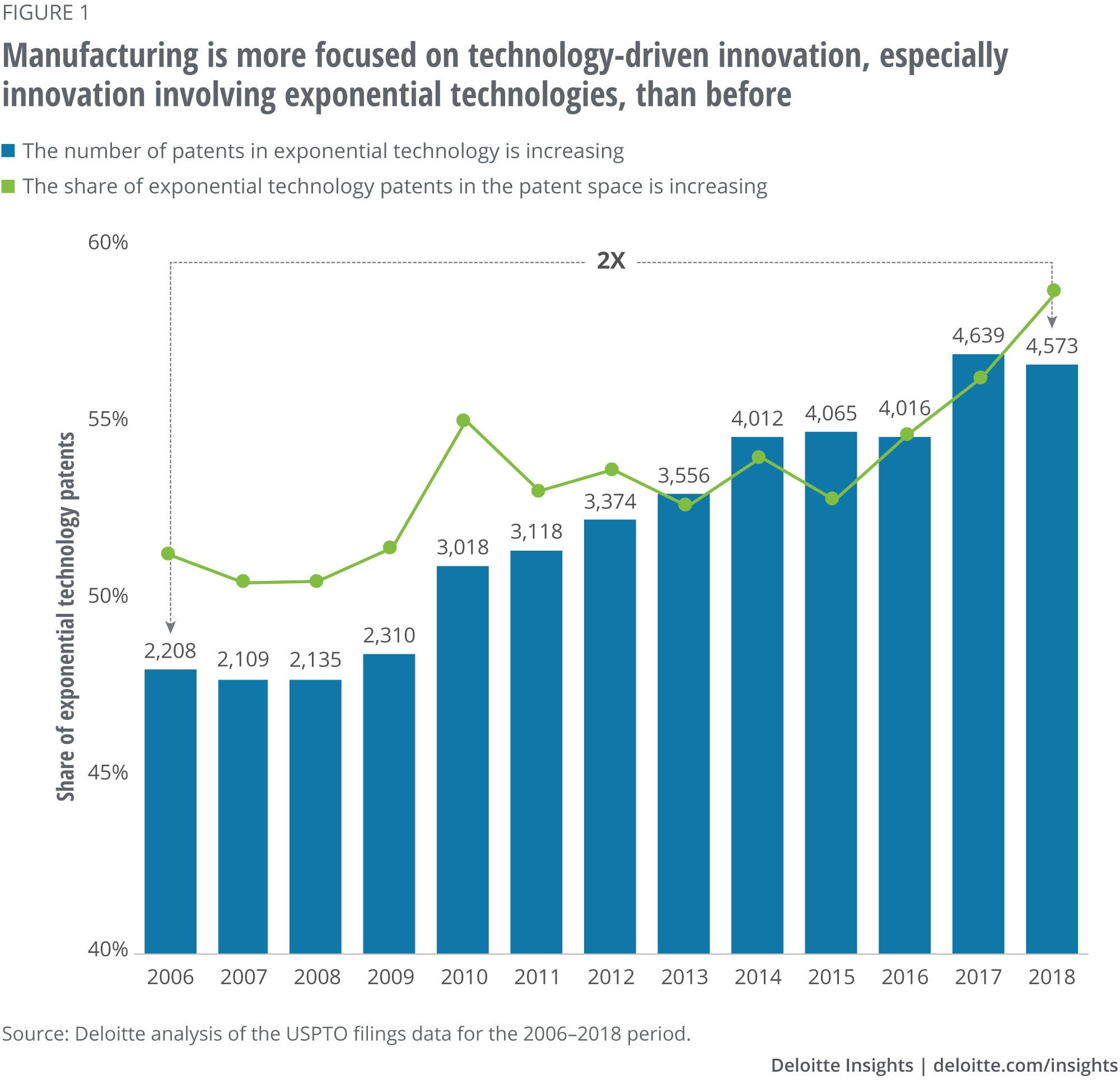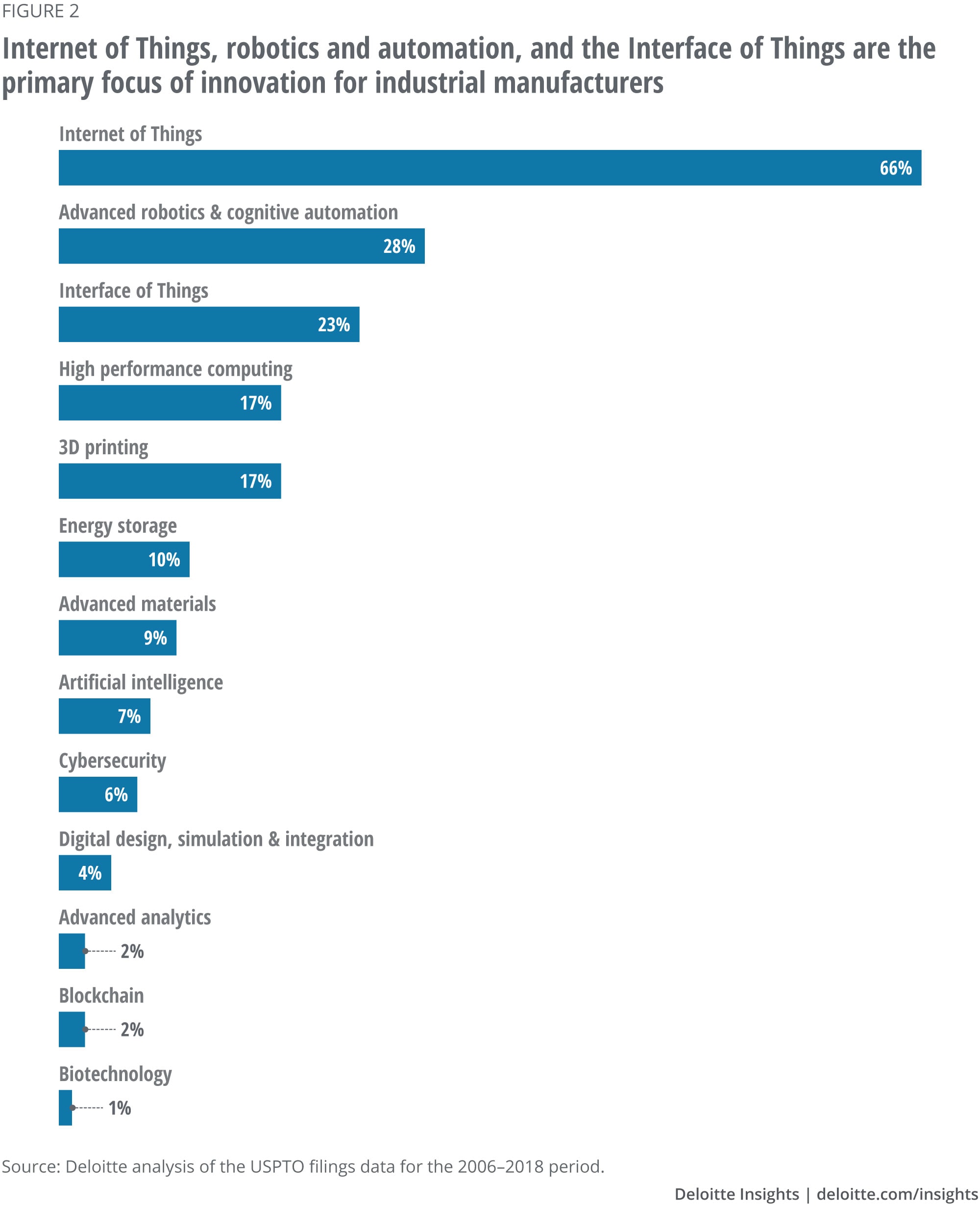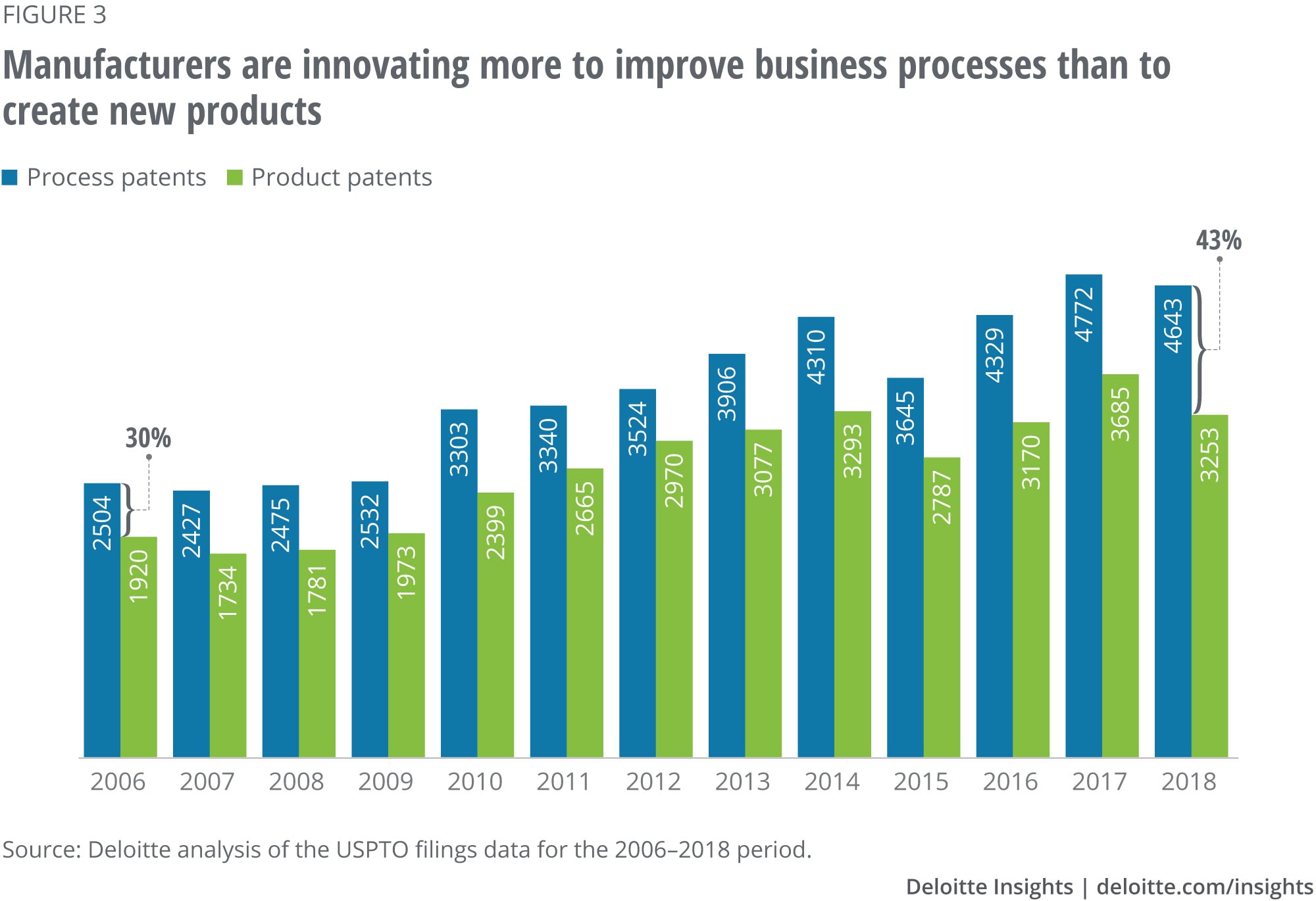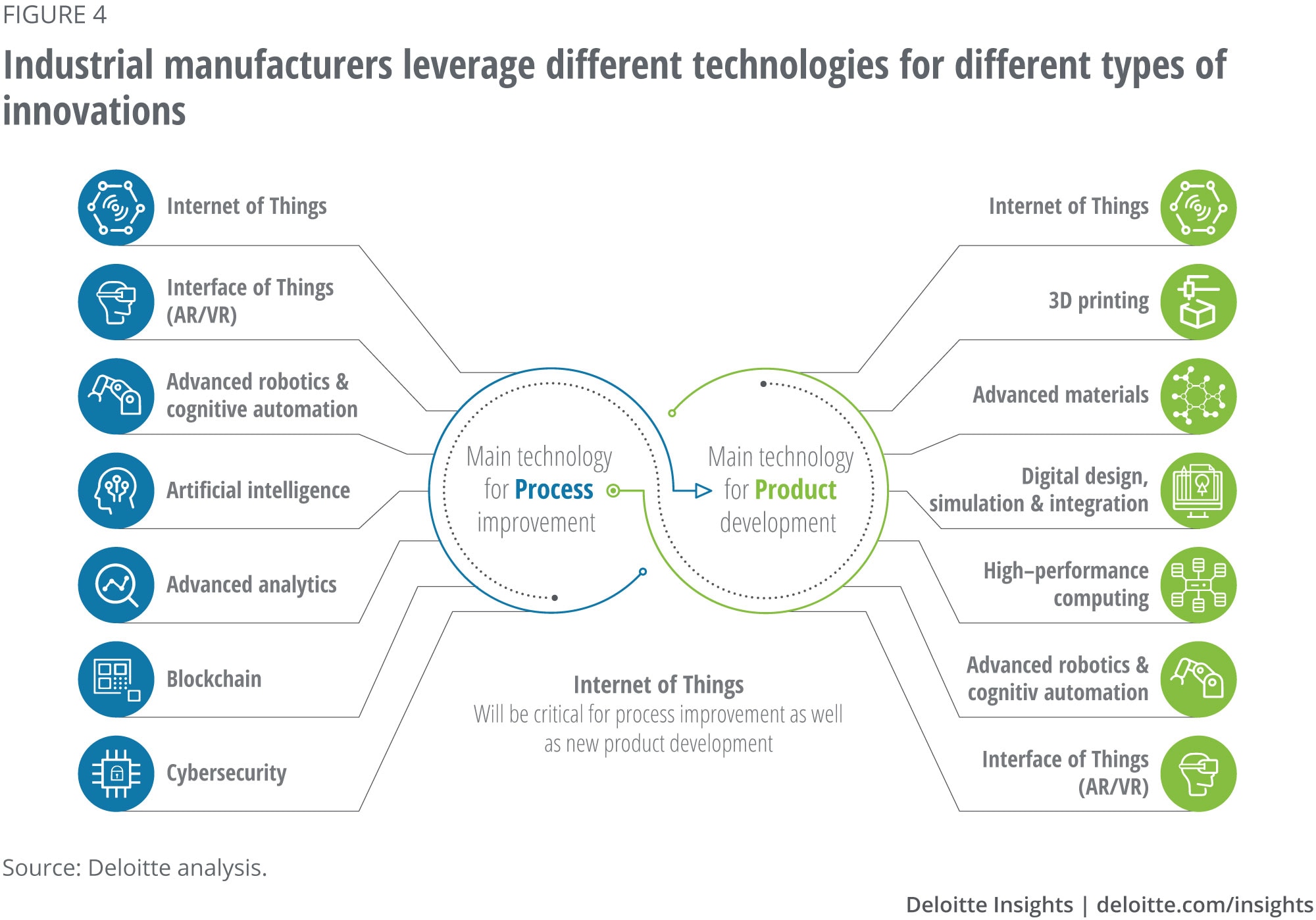
Pathways to faster innovation Making bold moves in “the second half of the chessboard”
6 minute read
09 July 2019
To keep pace with the Fourth Industrial Revolution, industrial manufacturing companies should leverage exponential technologies across product and process innovation.
Legend has it that when an emperor asked an inventor to name his reward, the inventor asked the emperor for payment in the humble grain of rice, giving the inventor the total gained by doubling a single grain of rice over a 64-square chessboard. In the end, the final squares had exponential mountains of rice. The velocity of technology advancement, especially for the manufacturing industry, is no different—it’s exponential.
Learn more
View the Innovation in industrial manufacturing collection
Subscribe to receive related content
Download the Deloitte Insights and Dow Jones app
Despite its lower digital maturity and research and development (R&D) investment than other industries,1 the manufacturing industry has been successful in gradually furthering its innovation agenda by increasing its patent-based innovation intensity to build new product and service capabilities. Continuous advancement will likely become critical to the success in an ecosystem that industry leaders believe is nearing the “second half of the chessboard.”2
The squares on the chessboard can be timed to the beginning of the technology revolution, using Moore’s Law as a measuring stick.3 It means that, if we start calculating from 1965 when Moore’s Law was created, in 2019 we are in the second half of the chessboard, with advancements in technology coming at an unprecedented pace. In such a scenario, manufacturers need to be smart not only in their chosen areas of innovation, but also about methods to deploy the very innovations. How can they achieve this?
By focusing on “exponential technologies”4 as a foundational approach to innovation across both products and processes.
Exponential technologies are a set of 13 technologies that Deloitte has identified as leading the forefront for innovation in manufacturing. They are 3D printing; advanced analytics; advanced materials; advanced robotics and cognitive automation; artificial intelligence; biotechnology; blockchain; cybersecurity; digital design, simulation, and integration; energy storage; high-performance computing; Interface of Things; and Internet of Things (IoT).
How they interact with each other in the US manufacturing space is given in the interactive network graph in Tracing innovation through exponential technologies.5
Focusing on exponential technologies to chart a path forward
We scanned the data from filings and citations at the US Patent and Trademark Office (USPTO) for a representative group of 43 Fortune 100 industrial companies. The data collected was spread over a 12-year period (2006–2018) and we scanned it to identify patterns of and linkages among the exponential technologies.
Our scan of the US patent universe for industrial manufacturers reveals that patents in exponential technologies have consistently represented the majority share of overall patents filed. In fact, during 2006–2017, such patents almost doubled and their concentration within the overall patent space also increased (figure 1). This is especially true in the past four years, as industrial manufacturers have applied these technologies along their digital maturity journey. Indeed, combining several advanced technologies has been an approach that many manufacturers are taking, and our patent data scan validates this trend.

IoT is driving a sensor-enabled future in industrial manufacturing
Deloitte has been tracking the adoption of a set of 13 exponential technologies in manufacturing for several years.6 As the network chart of exponential technologies of the US patent space shows, there are important connections among these technologies that reflect how digital technology is developing in industrial manufacturing. It should come as no surprise that the biggest concentration of activity centers around IoT (figure 2). Enterprise-level IoT implementations have the capability to optimize almost any processes and controls across production and operations or to become part of the products themselves. Realizing this, manufacturers are developing IoT solutions with other technologies to exploit their full benefits. Besides IoT, advanced robotics and cognitive automation as well as the Interface of Things7 are typically the primary focus areas for industrial manufacturers.

Connecting the technologies
An important adoption trend for exponential technologies is integration. For instance, IoT initiatives without advanced analytics capabilities will likely be less effective. To determine how manufacturers are investing and innovating in these areas, we created a network map for these technologies. The interactive map shows how these exponential technologies connect, and that manufacturers are building new capabilities and developing new products/services with IoT, robotics, and the Interface of Things as the foundation. By marrying robotics with IoT sensors and smart interfaces, such as virtual reality (VR), the industry is moving beyond connected products to immersive experiences for customers and employees.
Industrial manufacturers are focusing on process improvement
Our scan of the absolute number of patents granted by the USPTO for process improvement and product development reveals that the focus appears to be on improving processes. The gap between product and process patents increased from 30 percent in 2006 to 43 percent in 2018, growing by almost 1.5 times (figure 3). This makes sense, as asset-intensive industrial companies have long focused on reducing operating costs through greater efficiencies and process improvements. As the industry continues further along the digital maturity curve, however, there may come a need to increase product-related innovations to maintain a competitive position in the market.

Exponential technologies differ for process innovation and product development
As far as innovation is concerned, process and product are two separate areas, but there are many synergies between the two. Innovation in either area is highly likely to spill over to the other. Overall, IoT emerges at the center of exponential technology concentration, and is likely to be a central element in creating both connected products and connected processes. Interestingly, Deloitte’s scan reveals that industrial manufacturers are focusing on different technologies for innovation in process and different for product (figure 4).

For process innovation, the Interface of Things (AR/VR), advanced robotics and cognitive automation, artificial intelligence, and advanced analytics are the focus areas—as a higher number of patents are granted in these technologies. These innovations have likely helped industrial manufacturers stimulate their digital twin of the factory efforts, backed with high-end analysis and automation. Even blockchain- and cybersecurity-related patents are more prevalent for process innovation, highlighting the trend toward making operations more robust and secure.
On the product development side, industrial manufacturers are applying technologies such as 3D printing, advanced materials, digital design, simulation and integration, and high-performance computing. Some of the primary process technologies (advanced robotics and cognitive automation and Interface of Things, etc.) do not appear prominently in product development. This could change as R&D teams share process-related innovations with product designers, leading to the development of new products and services that meet unmet customer needs and experiences.
Final thoughts
The rapid pace of the Fourth Industrial Revolution challenges manufacturers to innovate progressively as they move along their digital maturity journey. Our scan of the USPTO data for industrial manufacturers reveals several insights that can help industrial leaders navigate the innovation ecosystem.
- Focusing on exponential technologies and applying them in different combinations to innovations in both process and product can help industrial companies gain an edge over their competitors.
- IoT is a central component of both product- and process-related innovation for industrial companies, and manufacturers should be developing strategic initiatives in both areas.
- Complementing a long-term internal innovation strategy with shorter-term external moves, such as through inorganic growth, for innovation can help manufacturers balance their R&D investments to deliver a continuous cycle of innovation.
Industrial manufacturers can examine their current innovation practices in relation to the insights above and determine how to best succeed during this “second half of the chess board.”
© 2021. See Terms of Use for more information.
Explore more
-
Innovation accelerators Article5 years ago
-
Cloud as innovation driver Article5 years ago
-
Special operations forces and great power competition Article5 years ago
-
Accelerating digital innovation inside and out Article5 years ago
-
What government can learn from venture capital Article5 years ago
-
What is work? Podcast5 years ago













